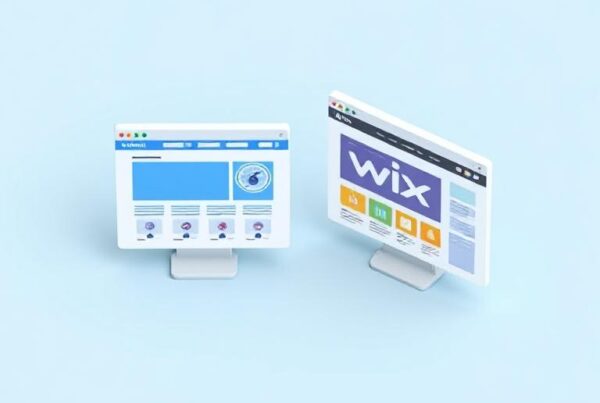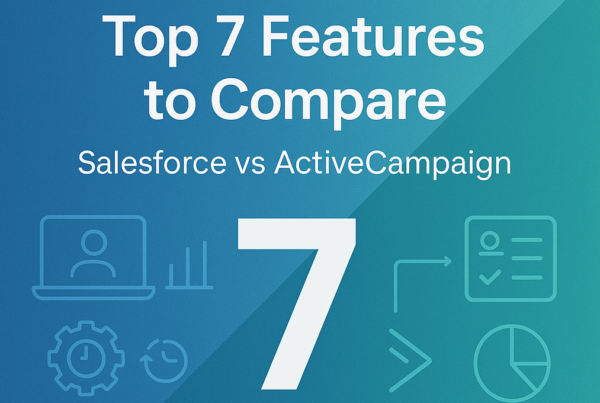Choosing between ConvertKit vs ActiveCampaign can significantly impact your email marketing success, especially considering the median ROI on email marketing stands at an impressive 122%. While both platforms serve similar purposes, they differ dramatically in capabilities. ActiveCampaign offers over 125 templates, while ConvertKit provides only three basic ones, favoring design flexibility.
ActiveCampaign scored 10 points in feature comparisons versus ConvertKit’s 2 points, highlighting substantial differences in functionality. When it comes to ActiveCampaign vs. ConvertKit deliverability, both perform admirably. ActiveCampaign maintains a 91% deliverability rate, while ConvertKit edges slightly ahead at 93%. Pricing also plays a role in selecting the right platform.
ActiveCampaign starts at $15 per month for 1,000 contacts, compared to ConvertKit’s $29 per month. However, ConvertKit offers a generous free plan for up to 10,000 subscribers. Whether you’re a solo creator needing simple automations or a business requiring predictive sending and advanced split testing, this guide helps match your needs.
Comparison Table: convertkit vs activecampaign
Compare ConvertKit vs ActiveCampaign side by side with this easy-to-read table. It highlights significant differences in pricing, email templates, automation tools, and deliverability rates, providing a fast and clear overview to guide your decision.
| Feature | ConvertKit | ActiveCampaign |
| Deliverability Rate | Approximately 89-98% | Approximately 90-98% |
| Starting Price (1,000 contacts) | $29/month (Creator Plan) | $29/month (Lite Plan) |
| Free Plan | Yes (up to 1,000 subscribers with basic features) | No (14-day free trial) |
| Email Templates | 50+ | 250+ |
| Interface | Clean, minimalist dashboard | Feature-rich, comprehensive dashboard |
| Email Editor | Simple and intuitive editor | Advanced drag-and-drop editor |
| Automation Capabilities | Visual automations with “if-then” logic | Advanced, visual automation builder with robust logic and integrations |
| Landing Pages | Unlimited, customizable landing pages | Integrated landing page builder |
| Split Testing | A/B testing for subject lines and email content | Advanced A/B testing for emails, automations, and forms |
| Analytics | Straightforward reporting and analytics | In-depth analytics with goal tracking and attribution |
| Monetization Features | Paid newsletters, digital product sales, and tipping | Integrated CRM with lead scoring and deal pipelines |
| Form Types | Inline, Modal, Slide-in, Sticky Bar | Inline, Floating Box, Floating Bar, Modal |
| Learning Curve | Easy for beginners | Steeper learning curve |
| Price for 5,000 Subscribers | $79/month (Creator Plan) | Starts at $79/month (Lite Plan) |
| Price for 10,000 Subscribers | $119/month (Creator Plan) | Starts at $139/month (Lite Plan) |
Ease of Use and Interface

The interface experience marks one of the most stark differences when evaluating ConvertKit vs. ActiveCampaign. Your choice between these platforms could significantly impact your daily workflow and productivity.
1. Dashboard Simplicity: Clean vs Feature-Rich Layouts
ConvertKit offers an exceptionally straightforward dashboard where almost everything you need is accessible directly from the header. This minimalist approach makes navigation intuitive, particularly valuable for content creators who prefer simplicity over complexity. In contrast, ActiveCampaign presents a comprehensive dashboard packed with options, which can initially appear overwhelming. The sidebar alone contains numerous features that require a thorough exploration of the ‘Getting Started’ tab to be fully understood.
The dashboard differences reflect their core philosophies: ConvertKit prioritizes simplicity, while ActiveCampaign emphasizes capability. This distinction becomes particularly relevant when considering ActiveCampaign vs. ConvertKit deliverability, as both platforms maintain impressive rates (ConvertKit at 98% and ActiveCampaign slightly lower), despite their interface differences.
2. Form and Landing Page Builders Compared
ConvertKit’s form and landing page builders are known for their user-friendliness. They offer intuitive templates for landing pages (unlimited on all plans), a seamless WordPress plugin, and four form types: Inline, Modal, Slide-in, and Sticky Bar.
- Unlimited landing pages on all subscription plans
- Intuitive templates organized by categories (ebook, event, etc.)
- WordPress plugin for seamless integration
- Four form types: Inline, Modal, Slide-in, and Sticky Bar
ActiveCampaign matches this ease but offers sophisticated options, such as custom forms with actions like “Subscribes to Deal” and SMS features that ConvertKit lacks. Furthermore, ActiveCampaign offers 40+ landing page templates, which is more extensive than ConvertKit’s selection. This makes ActiveCampaign worth considering, despite the pricing differences (ActiveCampaign starting at $15/month compared to ConvertKit’s $29/month for 1,000 contacts).
3. Learning Curve for Beginners
ConvertKit earns high marks for essential tasks, such as sending broadcasts and setting up basic automations. Its streamlined approach allows beginners to jump in and quickly figure out core functions. However, this simplicity becomes limiting when attempting complex automation sequences.
Consequently, ActiveCampaign presents a steeper learning curve but offers considerably more power. Although less intuitive than ConvertKit, it provides comprehensive resources to help users master its advanced features. For email design, ActiveCampaign outperforms its competitors with its drag-and-drop editor, which allows you to save custom blocks and track changes in real-time.
The choice ultimately depends on your priorities: ConvertKit for straightforward functionality or ActiveCampaign for powerful capabilities that reward the investment in learning its systems.
Email Design and Template Options

Email design capabilities reveal another crucial distinction between ConvertKit and ActiveCampaign. Your email appearance directly impacts engagement rates, making this comparison essential for business decision-making.
1. Drag-and-Drop Editor vs Plain Text Focus
ActiveCampaign excels with its intuitive drag-and-drop email builder that requires no coding knowledge. Unlike ConvertKit, it allows you to save custom content blocks for reuse and tracks changes in real-time, enabling seamless team collaboration.
Conversely, ConvertKit embraces simplicity with two editor options: a plain-text editor and a basic editor with limited formatting tools. This approach notably differs from ActiveCampaign’s visual editing philosophy. ConvertKit deliberately avoids drag-and-drop functionality, instead prioritizing clean designs that boost deliverability rates.
This philosophy contributes to ConvertKit’s slightly higher deliverability rate of 93% compared to ActiveCampaign’s 91%, an important consideration in the ActiveCampaign vs. ConvertKit deliverability comparison.
2. Template Variety: 250+ vs 15+ Options
The gap in template offerings between these two platforms is highly noticeable, especially for users prioritizing design flexibility when comparing available options in the ConvertKit vs activecampaign feature and pricing battle.
- ActiveCampaign offers an impressive library of 250+ responsive, professionally designed templates.
- ConvertKit offers over 15 templates, with additional options available through their marketplace.
This difference becomes particularly significant when evaluating ConvertKit vs activecampaign pricing, as ActiveCampaign’s $15/month starting plan includes access to all templates. In comparison, ConvertKit’s $29/month plan offers fewer design options despite the higher cost.
3. Branding and Customization Features
ActiveCampaign provides advanced branding tools through conditional content capabilities. This feature enables you to control what specific subscribers see, based on predefined criteria such as tags or custom fields. Additionally, subscribers with the Plus plan and above gain access to ActiveCampaign’s free email design service, a valuable asset for businesses seeking professional branding assistance.
ConvertKit offers more limited customization through its “Snippets” feature, which creates reusable content blocks for promotions and calls to action. While useful, it lacks ActiveCampaign’s dynamic content capabilities that personalize sections based on contact behaviors or tags.
For businesses that prioritize visual marketing, ActiveCampaign’s design capabilities surpass those of ConvertKit’s minimalist approach. However, you value simplicity and deliverability over visual complexity. ConvertKit might better align with your needs, especially considering its straightforward pricing structure, where all features are included regardless of plan level.
Love Beautiful Email Designs? Explore how Flodesk’s stunning visual templates stack against ConvertKit’s minimalist approach in our comprehensive Flodesk vs ConvertKit: Complete Comparison of Features, Cost, and Ease of Use analysis.
Automation and Workflow Capabilities
Automation capabilities form a decisive factor when evaluating ConvertKit vs activecampaign, with notable differences in complexity and functionality between these platforms.
1. Visual Automation Builders: ConvertKit vs ActiveCampaign
ActiveCampaign’s visual automation builder stands out with its comprehensive workflow visualization that supports complex customer journeys. The platform enables you to incorporate “wait” conditions, implement “if/then” logic, and set up triggers based on specific behaviors, such as page visits or link clicks. Moreover, these workflows can integrate emails, SMS, site messages, and CRM updates from a single interface.
Alternatively, ConvertKit offers a simpler visual automation builder that prioritizes ease of use over complexity. While user-friendly, it provides only basic functionality, making it ideal for straightforward sequences, such as welcome emails or simple follow-ups. This reflects the fundamental philosophy behind active campaign vs. ConvertKit deliverability, where ConvertKit’s simplicity contributes to its slightly higher 93% deliverability rate compared to ActiveCampaign’s 91%.
2. ConvertKit Automations: Sequences and Rules
ConvertKit structures its automation approach around two primary components:
- Sequences: Straightforward email series perfect for welcome emails or basic nurturing campaigns
- Rules: Simple “if this, then that” style triggers that execute actions like subscribing users to sequences after link clicks
The Sequence Reports page provides valuable statistics, including average open rates and click rates, for all emails in a sequence. While limited compared to ActiveCampaign, these tools are sufficient for creators seeking straightforward automation solutions.
3. ActiveCampaign Predictive Sending and AI Automations
ActiveCampaign elevates email marketing with AI-powered features, including predictive sending, which analyzes contact behavior patterns to determine the optimal delivery times. Furthermore, the platform offers A/B/C/D/E testing for entire workflows, not just individual emails, allowing you to compare different sequences for effectiveness.
This advanced functionality justifies the ConvertKit vs activecampaign pricing difference, where ActiveCampaign’s $15/month starting plan delivers substantially more automation power than ConvertKit’s $29/month equivalent for 1,000 contacts.
4. Prebuilt Templates for Common Campaigns
ActiveCampaign offers hundreds of industry-specific automation templates, including workout sequences for fitness coaches and homeowner campaigns for real estate agents. Additionally, their starter pack includes 10 pre-built email automation templates covering various customer lifecycle stages.
In comparison, ConvertKit offers creator-oriented automation templates, such as “Launch a new digital product” and “Run an evergreen newsletter,” albeit with fewer options overall. These templates align with ConvertKit’s focus on serving individual creators rather than businesses requiring sophisticated marketing automation.
Considering ActiveCampaign? Get the complete picture, including hidden costs, pros, cons, and alternatives in our in-depth ActiveCampaign Review 2025: Is Its Pricing Justified? An Honest Review & Alternative Look.
Analytics, Reporting, and Deliverability

Effective analytics often determines marketing success, making data capabilities a major differentiator between ConvertKit and ActiveCampaign.
1. Basic vs Advanced Reporting Dashboards
ConvertKit offers a relatively barebones reporting system, providing basic statistics such as unsubscribes, complaints, and bounces. Although limited, their Engagement Funnel chart effectively displays the percentage of users who open and click on your emails. Creator Pro subscribers gain access to the Insights dashboard, which shows which forms drive conversions and subscriber engagement levels.
Alternatively, ActiveCampaign delivers substantially more analytical power through its comprehensive reporting dashboard. Beyond basic metrics, you’ll find specialized reports for marketing revenue, eCommerce, predictive content, and conversion attribution. This advanced capability justifies the ActiveCampaign vs. ConvertKit pricing difference, where greater functionality comes at a similar price point.
2. ActiveCampaign Split Testing and A/B Tools
ActiveCampaign excels with its extensive split testing options, which are unavailable in ConvertKit. Their platform allows testing of five different variations across subject lines, sender information, and email content. These tests can be configured to automatically determine winners based on open rates, click-through rates, or conversion metrics.
- Test up to 5 variations per campaign
- Automate winner selection based on performance
- Analyze results by open, click, or conversion rates
Furthermore, ActiveCampaign enables testing entire automation sequences, not just individual emails, providing deeper insights into what drives conversions. This advanced capability gives businesses a competitive edge when optimizing their email marketing strategies, making ActiveCampaign a top choice in the ConvertKit vs ActiveCampaign comparison.
3. ConvertKit vs ActiveCampaign Deliverability Rates
Regarding ActiveCampaign vs. ConvertKit deliverability, both platforms perform admirably. Recent tests have shown that ConvertKit achieves a 93% deliverability rate, compared to ActiveCampaign’s 91%. Nevertheless, ActiveCampaign subsequently improved to 94.2% in later tests, earning the top position among all providers tested.
This high performance matters significantly since the average deliverability rate among tested providers was only 83.1%, meaning nearly 17% of emails never reach their intended destination.
4. AI-Powered Insights and Engagement Funnels
ActiveCampaign is integrating an AI-powered “campaign reporting co-pilot” called ActiveInsights, which allows for interaction with analytics through prompts and questions, such as “Why is my bounce rate higher than normal?” This innovation represents a significant advancement over traditional reporting.
Meanwhile, ConvertKit offers simplicity through its Engagement Funnel tracking, which visually represents subscriber journey analytics. The platform’s straightforward approach aligns with its focus on creators rather than enterprise-level analytics needs.
ConvertKit vs ActiveCampaign Pricing and Plans
Pricing structure becomes a decisive element when weighing your options between these email marketing platforms. Both ConvertKit and ActiveCampaign offer distinct approaches that merit careful examination.
1. Free Plan Comparison: ConvertKit’s 10K vs No Free Plan
ConvertKit stands out with its generous free plan, which supports up to 10,000 subscribers, a feature that ActiveCampaign doesn’t offer. Although limited to one email sequence and one basic visual automation, this free tier includes unlimited landing pages, opt-in forms, traffic, and subscriber tagging. In contrast, ActiveCampaign only provides a 14-day free trial across all pricing tiers.
2. Pricing Tiers: 1,000 to 50,000 Subscribers
For paid plans with 1,000 subscribers, ConvertKit’s Creator plan costs $29 per month, while ActiveCampaign’s entry-level Starter plan begins at just $15 per month. As your list grows, this gap fluctuates:
- 5,000 subscribers: ConvertKit $79/month vs ActiveCampaign $69-$99/month
- 10,000 subscribers: ConvertKit $119/month vs ActiveCampaign $111-$189/month
- 25,000 subscribers: ConvertKit $199/month vs ActiveCampaign $179-$286/month
ActiveCampaign offers four tiers (Starter, Plus, Professional, and Enterprise) compared to ConvertKit’s two options (Creator and Creator Pro).
3. Email Send Limits and Overages
Unlike ConvertKit automations, which operate without email send limits, ActiveCampaign restricts monthly sending based on your plan: 10 times your contact limit on Starter, 12 times on Professional, and 15 times on Enterprise. Beyond these thresholds, you incur overage fees.
4. Which Offers Better Value for Features?
Despite higher initial costs, ConvertKit delivers superior value for creators seeking simplicity. Its Creator Pro plan ($59/month for 1,000 subscribers) grants access to the Creator Network and unlimited users. Alternatively, ActiveCampaign offers better value for businesses that require advanced features, such as predictive sending and split testing capabilities.
When factoring in activecampaign vs. ConvertKit deliverability rates alongside pricing, the value equation becomes more complex. Both maintain impressive deliverability rates (ConvertKit: 93%, ActiveCampaign: 91%), regardless of price point differences.
Need Complete ConvertKit Details? Dive deeper into every feature, pricing tier, and real user experiences in our comprehensive ConvertKit Review: Everything You Need to Know About Pricing, Features, and Plans guide.
Audience Growth and Monetization Tools

Beyond email delivery, monetization capabilities present significant differences when comparing ConvertKit vs ActiveCampaign. Your growth strategy might depend heavily on these distinct toolsets.
1. ConvertKit Creator Network and Paid Recommendations
ConvertKit’s Creator Network stands out as a revolutionary vertical integration for content creators. This network connects you with similar audiences for cross-promotion, resulting in substantial subscriber growth; one fitness coach reported gaining 22,000 new subscribers through this feature. Additionally, ConvertKit offers multiple monetization paths:
- Sponsor Network: Places advertisements in your newsletters
- Paid Recommendations: Earn $2-$20 per subscriber when recommending other newsletters
- Commerce tools: Sell digital products directly through the platform
- Paid newsletters: Implement premium content behind paywalls
- Tip jars: Accept one-time contributions from supporters
This holistic approach differs substantially from ActiveCampaign’s business-focused tools, yet it still maintains excellent deliverability rates (93% for ConvertKit versus 91% for ActiveCampaign).
2. ActiveCampaign CRM and Lead Scoring
ActiveCampaign excels with its integrated CRM that bridges marketing and sales functions. The platform’s lead scoring system ranks contacts based on their actions, including email opens, form submissions, and site visits, helping to identify high-value prospects. This sophisticated system can automatically trigger notifications when leads reach certain scores, enabling timely follow-ups with the most promising opportunities.
Furthermore, ActiveCampaign’s win probability feature utilizes AI to analyze deals and predict closure likelihood, justifying the pricing difference between ConvertKit and ActiveCampaign for businesses requiring advanced sales tools.
3. Selling Digital Products and Subscriptions
Regarding e-commerce integration, ConvertKit offers seamless connections with Shopify and Stripe, making it ideal for selling digital products, courses, or services. All ConvertKit plans include unlimited landing pages and digital product selling capabilities regardless of pricing tier.
In contrast, ActiveCampaign lacks direct monetization tools but compensates with robust automation templates for e-commerce, including abandoned cart follow-ups and upsell sequences. Its integration with platforms like Shopify, BigCommerce, and Podia makes it suitable for businesses with established sales processes.
Newsletter-Focused Platform? If you’re primarily building newsletters, discover how Beehiiv’s specialized features compare to ConvertKit’s creator tools in our detailed Beehiiv vs ConvertKit: A Comprehensive Comparison for Newsletter Growth guide.
Conclusion
Choosing between ConvertKit vs ActiveCampaign can significantly impact your email marketing success, especially considering the median ROI on email marketing stands at an impressive 122%. While both platforms serve similar purposes, they differ dramatically in capabilities and target users. ActiveCampaign offers over 125 responsive email templates, compared to ConvertKit’s three basic templates, making it the clear winner in terms of design flexibility.
Additionally, ActiveCampaign scored 10 points in feature comparisons against ConvertKit’s 2 points, highlighting substantial differences in functionality. When it comes to ActiveCampaign vs ConvertKit deliverability, both perform admirably. ActiveCampaign maintains a 91% deliverability rate, while ConvertKit edges slightly ahead at 93%. Pricing presents another important consideration, with ActiveCampaign starting at $15 per month for 1,000 contacts, compared to ConvertKit’s $29 per month for the same number.
ConvertKit offers a generous free plan supporting up to 10,000 subscribers. Whether you’re a solo creator needing simple ConvertKit automations or a business requiring ActiveCampaign predictive sending and advanced split testing capabilities, this comparison will help you determine which platform truly fits your specific needs.
FAQs on convertkit vs activecampaign
Q1. What are the main differences between ConvertKit and ActiveCampaign in email templates?
When comparing ConvertKit vs. ActiveCampaign, ActiveCampaign wins with over 250 responsive email templates. In contrast, ConvertKit offers just 15+ basic options, limiting design flexibility for users who want polished, professional-looking emails.
Q2. How do the pricing plans of ConvertKit and ActiveCampaign compare?
The pricing of ConvertKit and ActiveCampaign shows noticeable differences. ConvertKit starts at $29 per month for 1,000 contacts and offers a free plan for up to 10,000 subscribers. In contrast, ActiveCampaign costs $15 per month but includes only a 14-day free trial.
Q3. Which platform is better for beginners, ConvertKit or ActiveCampaign?
For those comparing ConvertKit vs ActiveCampaign, beginners will find ConvertKit easier to use. Its clean interface and simple automation make it ideal for newcomers. In contrast, an active campaign’s advanced features require a steeper learning curve.
Q4. What are the deliverability rates for ConvertKit and ActiveCampaign?
ConvertKit vs. ActiveCampaign deliverability comparisons: ConvertKit leads slightly with a 93% deliverability rate, compared to ActiveCampaign’s 91%. This edge means ConvertKit users can expect more of their emails to reach inboxes consistently.





